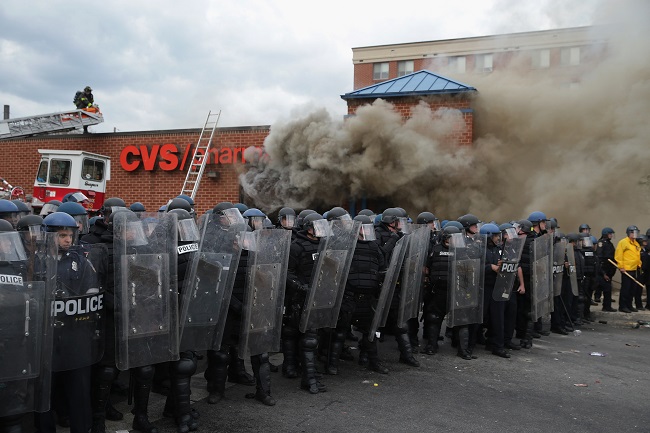
According to research conducted by the International Association of Chiefs of Police (IACP), law enforcement officers throughout the United States use force on roughly 750,000 people each year, and an estimated 400 individuals will die as a result of those incidents.[1] Police officers across the U.S. also are victims of violence, often stemming from retaliation in use-of-force incidents.
The headlines seem relentless, most recently those published in April 2015, when the city of Baltimore erupted first in peaceful demonstrations and ultimately in violence in the aftermath of the arrest and ultimate death of resident Freddie Gray, who suffered a fatal spinal injury while in police custody.
But the 2014-15 incidences are only the latest. In 1994, Philadelphia police officers failed to restrain suspect Gino Thompson in their van, then drove recklessly enough to cause him to fall, which resulted in Thompson's spine being severed. In 1997, the news media described how Abner Louima had been sodomized with a broken broomstick handle while detained in a New York City police station. Two years later, NYPD officers shot unarmed Guinea immigrant Amadou Diallo 41 times in the doorway of his apartment building and then claimed that he was reaching for a gun.[2]
Racial discrimination and biases are perceived by many to be at the heart of these incidences. In the top 75 cities with the largest police forces, whites are overrepresented among police forces relative to the cities’ population. There are “no universal set of rules” that govern the use of force, according to the U.S. Department of Justice, leaving police officers to rely on their respective agencies for guidance in this area.[3]

"Black Lives Matter, Blue Lives Matter," is available for download as an e-document, through ICMA's online bookstore. Click here to order today.
What can local governments do to address these issues?
In a thought-provoking article titled “Black Lives Matter, Blue Lives Matter: Racial Disparity and a Review of Police-Community Relations,” ICMA Fellow Sarah Hazel and City Manager Ron Carlee, both of Charlotte, North Carolina, examine the underlying factors that have shaped police-community relations and the steps that local government professionals can take to mitigate the kinds of crises discussed above. The article explores four critical elements inherent in police-community relations and police use of force. They are
- The context of race in society
- The different perceptions of policy based on race
- The prevalence of police use of deadly force
- Policies on police use of force.[4]
“Black Lives Matter, Blue Lives Matter” also provides a framework for discussing use-of-force policies, including ways local appointed and elected officials can ensure accountability by police. The authors identify specific areas that are crucial for discussions among local leaders, police, and the community to review prior to the outbreak of an incident (see corresponding infographic below).
Finally, the article suggests ways to mitigate police-community relations incidents, as well as several opportunities communities can take advantage of to improve those relations.
This article is one of seven research-based articles featured in The Municipal Year Book 2015, the first electronic edition of ICMA’s popular annual compilation of management issues and trends. In addition to police-community relations, this authoritative source book of local government data and developments focuses on
• Trends in Local Economic Development Policies
• Collaboration: The Key to Building Communities for All Generations
• Collaborative Service Delivery: A Tool for Assessing Feasibility
• 2014: The Year of Fiscal Reckoning
• The Paradigm Shift in Public Administration: Some Thoughts on
Changing Best Practices
• Can We Work Together? Regional Councils and the Challenges They Face.
The Municipal Year Book 2015 also contains two valuable information resource directories plus a foreword from ICMA Executive Director Bob O’Neill that examines eight areas of focus for local governments in the coming decade.Put the thousands of hours of research, expert interpretations of survey data, and innovative ideas and practices from local governments around the world to work for your community. Learn more about the 2015 edition of ICMA’s Municipal Year Book.
New, Reduced Membership Dues
A new, reduced dues rate is available for CAOs/ACAOs, along with additional discounts for those in smaller communities, has been implemented. Learn more and be sure to join or renew today!
